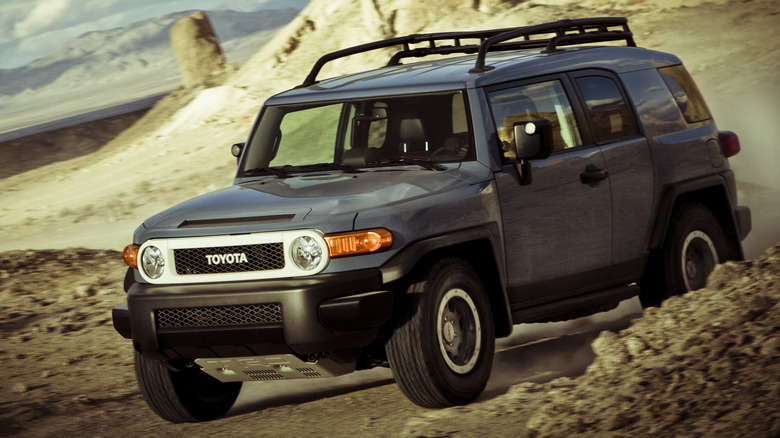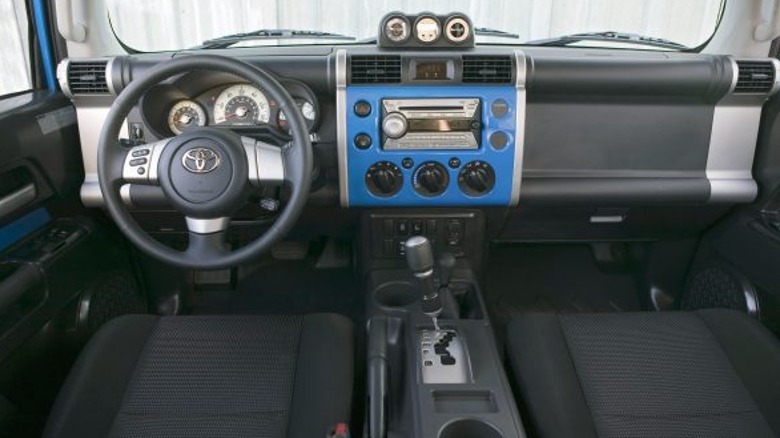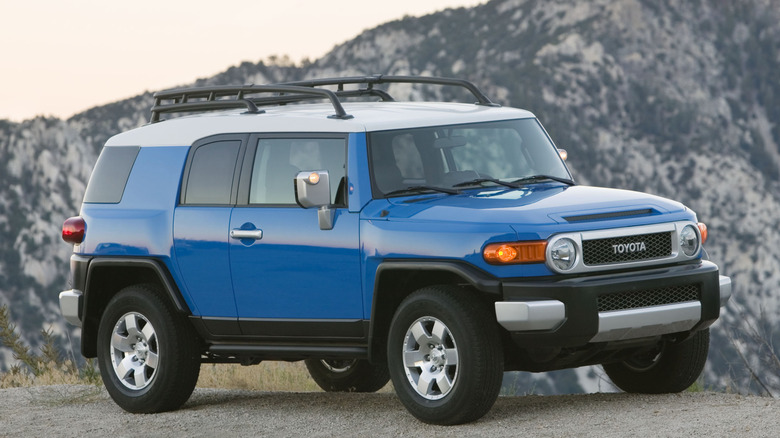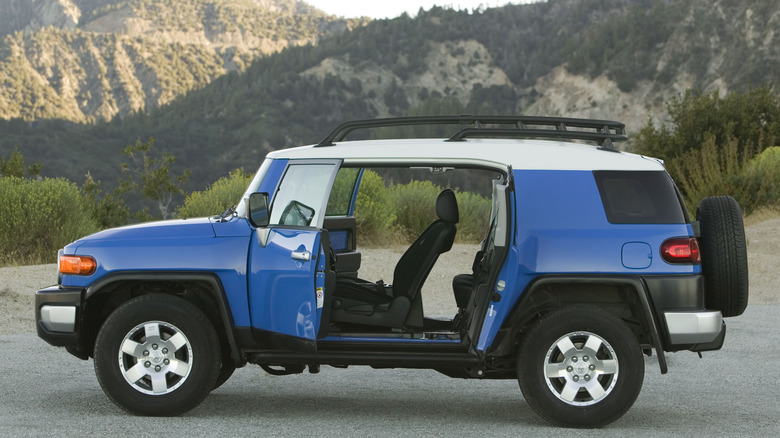Here's Why The Toyota FJ Cruiser Became A Collectible Cult Classic
Looking at today's more mass-market focused lineup, the FJ Cruiser (not to be confused with the Toyota FJ Land Cruiser) looks like an alien. It's huge, quirky, and simultaneously retro and contemporary. There aren't really any other Toyotas to compare it to aesthetically. Toyota only made the car for a single generation for American markets from 2007-2014. According to a press release, the automaker managed to sell more than 200,000 of the boxy roader before it was discontinued with a final special edition.
The FJ stands out; not for what is, but for what it isn't. Similarly to the Jeep Wrangler, the FJ eschewed conventional style norms of more popular crossover SUVs in favor of practicality and functionality. A Toyota Highlander doesn't have the same huge bug-eyed headlights like an FJ, but it can scream across the desert without a care in the world like it. Although slightly more rounded than its American Jeep competitor, the FJ also went the cardboard box styling route.
It was only ever offered with one engine — a 4-liter V6 — and the standard equipment list looks absolutely spartan today. For bells and whistles in 2014, it had a backup camera, and Bluetooth connectivity, and that's about it. It came with water resistant cloth seats and interior map lamps. Four-wheel drive was even an optional extra.
As far as specifications are concerned, the FJ Cruiser didn't change very much throughout the years, only experiencing a modest horsepower bump to 259 horsepower. You also only got 18 combined miles per gallon.
Decidedly not a commuter car
With only 200,000 and some change FJ Cruisers leaving Toyota's Hamura Plant in Japan in eight model years, there really aren't that many FJ Cruisers around, giving it sort of a cult classic status. 200,000 seems like a lot, but Toyota can sell that many cars in a single month across its brands, much less eight years.
Brand-new, a 2014 FJ Cruiser carried an MSRP of $27,680 (around $36,996 in today's money). That's not particularly expensive, around the MSRP of a modestly equipped Jeep Wrangler today, but still likely outside the price range for someone who just wants a practical crossover.
Practical, the FJ Cruiser was not. According to reviews from the time, it was not very fun to drive on pavement and it was more akin to navigating an armored personnel carrier than driving a regular SUV — poor fuel economy and bad visibility included. It was strictly an off-roader that could also perform normal car duties, but only under great protest.
The back seats were also more of a nice suggestion than anything usable. Still, the engine carried classic bulletproof Toyota reliability, and the fact that it was dead simple on the inside and out means that there are few components to actually break. If the reveal of Toyota's new retro-inspired Land Cruiser is anything to go by, then enthusiasts really love retro off-roaders.
The FJ (Cruiser) lives on
Nearly a decade after the FJ Cruiser ended production, it still enjoys a very healthy auction market. It is not at all unusual to see FJ Cruisers cross the virtual auction block of sites like Bring a Trailer for well over the original MSRP. To further illustrate the FJ Cruiser's status as a cult-classic, a 2014 Toyota FJ Cruiser Trail Teams Ultimate Edition (the final edition FJ before being axed) auctioned for an astonishing $103,000 last August.
To be fair, it was in immaculate shape and had only 250 miles on the clock, but over six-figures for an eight-year-old Toyota is quite the feat.
Although it's impossible to truly know what drives market forces and enthusiast trends, the FJ — with its big goofy headlights and loads of personality — harkened back to simpler automotive eras. Toyota's current lineup, although incredibly efficient and ultimately better for the planet, doesn't always convey the same old-school charm that was available in spades with the FJ Cruiser.



